Take 10% off all #NSTA Kids Books thru 2/23/15
By Lauren Jonas, NSTA Assistant Executive Director
Posted on 2015-02-13
NSTA Kids books are all on sale through February 23, 2015! Take 10% off the items below when you use promo code GIVEBK when you purchase these in the NSTA Science Store.
 Next Time You See a Seashell
Next Time You See a Seashell
(soft cover, e-book, mixed-media set, and library editions all included in the sale)
Bonuses for this book are available, including O-W-L chart + seashell anticipation guide
 Next Time You See a Sunset
Next Time You See a Sunset
(soft cover, e-book, mixed-media set, and library editions all included in the sale)
* A 2014 Outstanding Science Trade Book for Students K-12
* 2014 Winner of the REVERE Award from PreK-12 Learning Group, Association of American Publishers
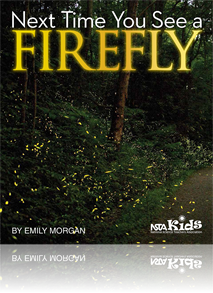 Next Time You See a Firefly
Next Time You See a Firefly
(soft cover, e-book, mixed-media set, and library editions all included in the sale)
READ a free sample chapter for this book: Firefly sample chapter
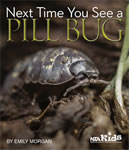 Next Time You See a Pill Bug
Next Time You See a Pill Bug
(soft cover, e-book, mixed-media set, and library editions all included in the sale)
“Especially designed to be experienced with an adult—be it a parent, teacher, or friend.”
 Next Time You See the Moon
Next Time You See the Moon
(soft cover, e-book, mixed-media set, and library editions all included in the sale)
WATCH: Fans of this book will also love this Moon Phases Demonstration on YouTube, produced by author Emily Miller.
 Next Time You See a Maple Seed
Next Time You See a Maple Seed
(soft cover, e-book, mixed-media set, and library editions all included in the sale)
READ a sample chapter: Next Time You See a Maple Seed sample
 Set of all six Next Time You See books paperbacks or library editions
Set of all six Next Time You See books paperbacks or library editions
WATCH the Next Time You See – NSTA Book Trailer on YouTube for these books and let author Emily Miller tell you how to wake up children’s natural sense of wonder!
 What Does an Animal Eat?
What Does an Animal Eat?
(e-book and mixed-media set included in the sale)
Read a sample chapter: What Does an Animal Eat?
 How Tall Was Milton?
How Tall Was Milton?
(e-book and mixed-media set included in the sale)
Read a sample chapter: Milton the Giant: I Wonder Why
 How Does a Plant Grow?
How Does a Plant Grow?
(e-book and mixed-media set included in the sale)
Read a sample chapter: Plants Can Grow Different Parts—How Do Plants Grow?
 What Makes Different Sounds?
What Makes Different Sounds?
(e-book and mixed-media set included in the sale)
Read a sample chapter: Ding Ding Ding
 What Can an Animal Do?
What Can an Animal Do?
(e-book and mixed-media set included in the sale)
Read a sample chapter: What Can an Animal Do?: I Wonder Why
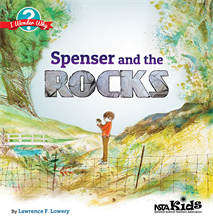 Spenser and the Rocks
Spenser and the Rocks
(e-book and mixed-media set included in the sale)
Read a sample chapter: Spenser and the Rocks sample
 Clouds, Rain, Clouds Again
Clouds, Rain, Clouds Again
(e-book and mixed-media set included in the sale)
Read a sample chapter: Clouds, Rain, Clouds Again sample
 How Does the Wind Blow?
How Does the Wind Blow?
(e-book and mixed-media set included in the sale)
Read a sample chapter: How Does the Wind Blow sample
 Up, Up in a Balloon
Up, Up in a Balloon
(e-book and mixed-media set included in the sale)
A 2014 Outstanding Science Trade Book for Students K-12
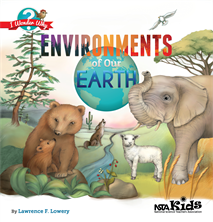 Environments of Our Earth
Environments of Our Earth
(e-book and mixed-media set included in the sale)
Read a sample chapter: Environments of Our Earth: I Wonder Why sample
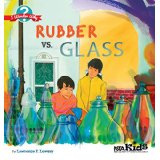 Rubber vs. Glass
Rubber vs. Glass
(e-book and mixed-media set included in the sale)
Read a sample chapter: Rubber vs. Glass: I Wonder Why sample
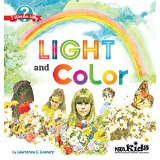 Light and Color
Light and Color
(e-book and mixed-media set included in the sale)
Read a sample chapter: Light and Color: I Wonder Why sample
 Sounds Are High, Sounds Are Low
Sounds Are High, Sounds Are Low
(e-book and mixed-media set included in the sale)
Read a sample chapter: Sounds Are High, Sounds Are Low: I Wonder Why sample
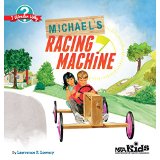 Michael’s Racing Machine
Michael’s Racing Machine
(e-book and mixed-media set included in the sale)
Read a sample chapter: Michael’s Racing Machine: I Wonder Why sample
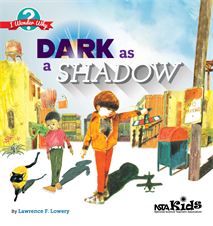 Dark as a Shadow
Dark as a Shadow
(e-book and mixed-media set included in the sale)
Set of all 15 I Wonder Why Books
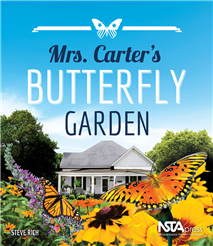 Mrs. Carter’s Butterfly Garden
Mrs. Carter’s Butterfly Garden
(e-book and mixed-media set included in the sale)
Read a sample chapter: Mrs. Carter’s Butterfly Garden sample
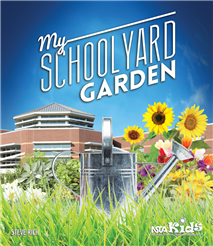 My School Yard Garden
My School Yard Garden
(e-book and mixed-media set included in the sale)
Read a sample chapter: My School Yard Garden sample
Follow NSTA
NSTA Kids books are all on sale through February 23, 2015! Take 10% off the items below when you use promo code GIVEBK when you purchase these in the NSTA Science Store.
Effective partnerships
By Mary Bigelow
Posted on 2015-02-12
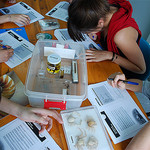 My school has been approached by a university to form a partnership to apply for grants for elementary science and math. What factors should we consider regarding this offer? —L., California
My school has been approached by a university to form a partnership to apply for grants for elementary science and math. What factors should we consider regarding this offer? —L., California
This could be a great opportunity to supplement or enhance the professional development, materials, programs, or technology in your school, especially if you have a tight budget. Before you agree, representatives from your school (including teachers and administrators) should meet with the university staff to ask questions, share ideas, and develop a project that will benefit all of the stakeholders (especially the students). I’ve been involved with several K-16 projects that had various interpretations of the word “partnership,” so from the beginning it’s essential to collaborate on a shared definition of terms and agreed-upon expectations for responsibilities and outcomes.
For example, in one very traditional project, the teachers attended workshops or courses conducted by the university during the school year. Teachers updated their content knowledge and became more familiar with technology and lab equipment. If you participate in this type of partnership, it is important to describe and assess not only what the teachers will learn, but also how this new knowledge will influence their classroom instruction.
In another project, university professors worked with teachers in hands-on activities over the summer on special topics aligned with the state science standards. During the school year, the professors visited the schools to interact with the K-6 students. Spending time in an elementary school was a new experience for them. They learned what challenges the teachers faced, including the variety of students (and size of the classes), the obligation to address state science standards, the type of equipment available in the schools, and the emphasis on testing in reading and mathematics. But they enjoyed the energy and enthusiasm of the students and were impressed by their questions and interest. The students had the opportunity to meet and work with real scientists. The disadvantage of this type of project is a “special event” atmosphere can occur. For any lasting impact, this should be an ongoing collaboration between the teacher and the professor, not just a few gee-whiz demonstrations by the professor while the teacher watches from the sidelines.
I’ve heard about mentoring projects during which teachers spent a summer working as research assistants at a university or science organization. They learned the content, lab procedures, and research models in use. They assisted with collecting and analyzing data. The teachers returned to their classrooms in the fall with new content knowledge, a sense of accomplishment, and insights into what is involved in scientific research. This type of mentoring required a commitment from both the teachers and the lead researchers. in addition, the teacher-researchers required training and background education on the research subject.
Then there are partnerships that give teachers access to the facilities of higher education: nature centers, museums, specialized equipment and expertise, tours of laboratories, access to library resources, invitations to special lectures or presentations, and field trip opportunities for students. Some higher education institutions have traveling science specialists that visit schools for demonstrations or assemblies.
Ask about the responsibilities the school will have in terms of recruiting teachers to participate, scheduling time, and providing support or materials. If the university staff will work directly with students, they may need clearances in compliance with state or local laws.
If the partnership is part of a university research project, teachers and students’ parents may be asked to sign consent or release forms, according to university policy. It should be clear what type of data the university will need to access or collect, for example student standardized test scores, observations, student pre-and posttests, teacher feedback, surveys, photographs/videos, or interviews. The ownership of any equipment should be established ahead of time, as well as who will be listed on any publications or press releases about the project.
In most partnerships, the K-12 teachers and the university faculty were compensated for the time they spend beyond their normal teaching duties.
Regardless of what your partnership project looks like, it will be important to ask: What happens at the end of the project? What knowledge, skills, materials, and self-confidence will the teachers have gained that will continue to improve student learning?
Photo: https://www.flickr.com/photos/xevivarela/4610711363/sizes/o/in/photostream/

